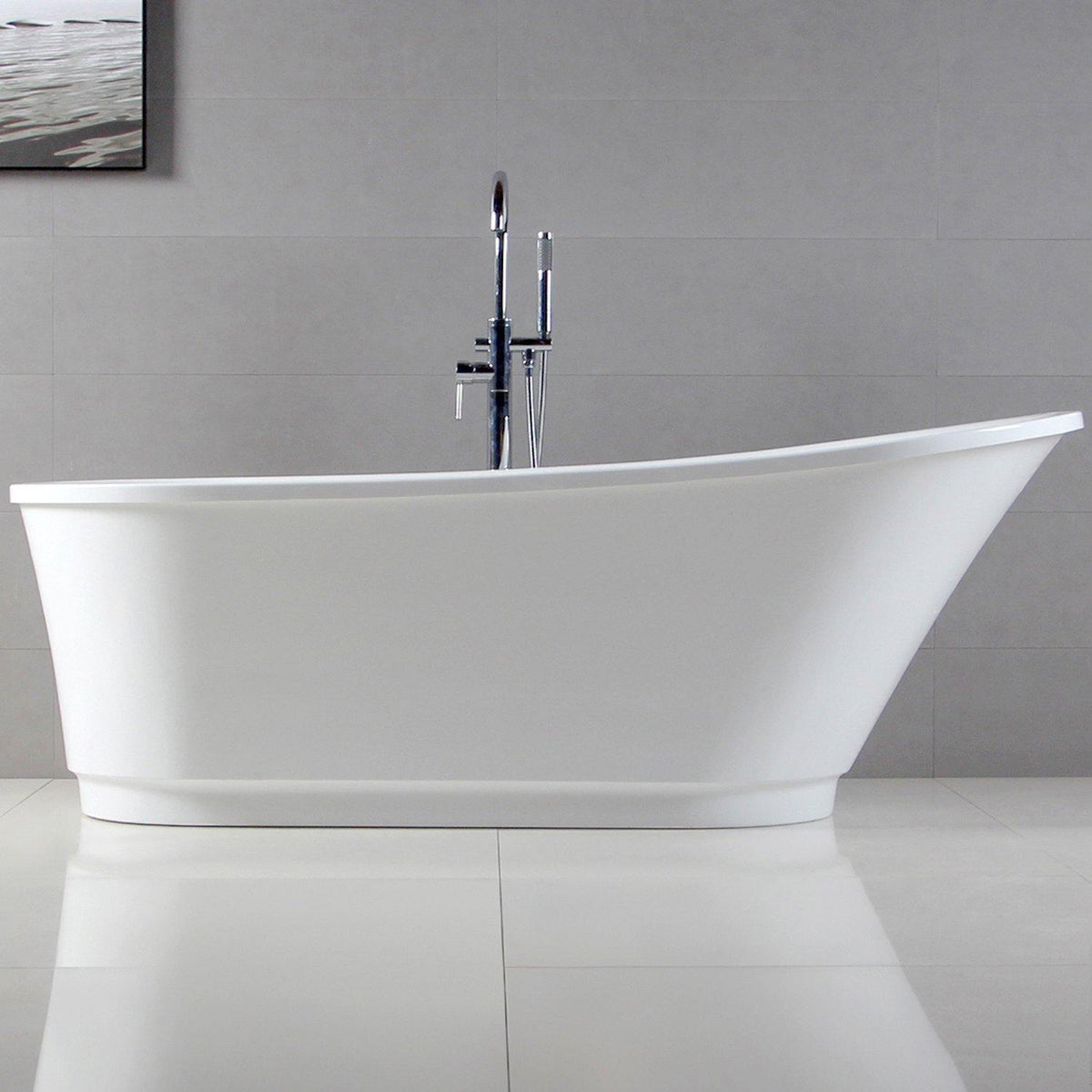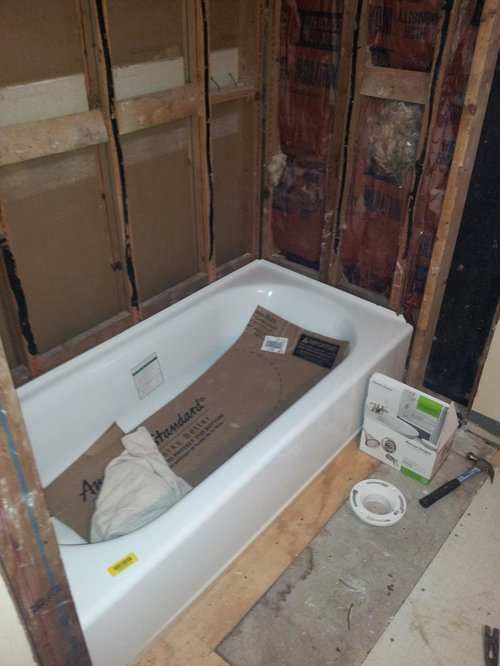How do you really feel in relation to Tools You Need to Install a New Bathtub ?

Setting up a tub isn't precisely brain surgery, however it does need strong plumbing, woodworking, as well as often, tiling abilities. Changing an old tub with a brand-new one is likewise a reasonably tough job. If the old bathtub is easily easily accessible, the job can move speedily; if you have to open up a wall surface to get rid of the old bathtub as well as place the new tub, the task is much harder. In either case, the project is within a residence handyman's abilities, although you will need a helper to vacate the old bathtub and also embeded in the new one. Ensure you have qualified on your own for the work as well as are comfortable attempting it. Rather than hiring a contractor to take control of a halfway-completed task, it is much better to think about employing one before you start. Opportunities are you may need a professional plumber to make tube links.
This post will certainly aid you set up a new bathtub in your washroom if you have actually already bought a brand-new bathtub as well as don't require to alter the arrangement of your previous water supply pipelines.
Your tools and product checklist should consist of the following:
Removing Old Touches
If you need to change old taps with new ones as a part of your installment, then the first thing you should do is separate the supply of water. After doing so, turn on the faucets to drain any kind of water remaining in the system. The procedure of removing the existing faucets can be rather problematic as a result of the restricted accessibility that is typically the case.
Make use of a basin wrench (crowsfoot spanner) or a faucet tool to reverse the nut that attaches the supply pipes to the taps. Have a towel prepared for the remaining water that will certainly come from the pipelines. Once the supply pipelines have been eliminated, use the exact same tool to loosen the nut that holds the faucets onto the bath/basin. You will require to quit the single faucets from turning throughout this process. As soon as the taps have actually been removed, the holes in the bath/basin will need to be cleaned up of any kind of old sealing substance.
Before proceeding to fit the brand-new taps, contrast the pipe connections on the old faucets to the new faucets. If the old faucets are longer than the new faucets, after that a shank adapter is required for the new faucets to fit.
Suitable New Taps
If the tails of the new faucets are plastic, after that you will need a plastic port to stop damage to the thread. One end of the port fits on the plastic tail of the tap as well as the various other end provides a link to the current supply pipes.
If you need to fit a monobloc, after that you will need minimizing couplers, which attaches the 10mm pipe of the monobloc to the conventional 15mm supply pipeline.
Next, position the faucet in the mounting hole in the bath/basin making sure that the washing machines remain in place between the faucet and also the sink. Secure the tap in position with the supplier provided backnut. When the faucet is firmly in place, the supply pipes can be linked to the tails of the faucets. The faucets can either be connected by using corrugated copper piping or with typical faucet adapters. The previous type ought to be linked to the faucet finishes initially, tightening only by hand. The supply pipes can later be linked to the various other end. Tighten up both ends with a spanner after both ends have been connected.
Setting up the Tub
Utilizing both wood boards under its feet, position the bath tub in the required position. The wooden boards are valuable in uniformly spreading out the weight of the bath tub over the location of the boards as opposed to concentrating all the weight onto four small points.
The next goal is to guarantee that the tub is leveled all round. This can be accomplished by inspecting the level as well as changing the feet on the tub up until the level reviews degree.
To set up faucets, fit all-time low of the outermost versatile faucet port to the proper supply pipeline by making a compression sign up with; then do the exact same for the other tap.
Turn on the supply of water and check all joints and new pipework for leaks and tighten them if necessary. Load the bath tub as well as additionally inspect the overflow electrical outlet and the normal outlet for leakages.
Ultimately, take care of the bath paneling as described in the manufacturer's user's manual. Tiling and also securing around the tub ought to wait until the bathtub has actually been utilized a minimum of once as this will resolve it right into its last setting.
Preparing for the Installation
To start with, the sustaining framework supplied with the bathroom must be fitted (if needed) according to the producer's instructions. Next off, fit the faucets or mixer to the bathtub. When fitting the tap block, it is essential to make sure that if the tap features a plastic washing machine, it is fitted in between the bath and the faucets. On a plastic bathroom, it is likewise practical to fit a supporting plate under the taps device to prevent pressure on the bath tub.
Fit the versatile tap connectors to the bottom of both faucets utilizing 2 nuts and olives (occasionally supplied with the tub). Fit the plug-hole electrical outlet by smearing mastic filler round the sink electrical outlet hole, and then pass the electrical outlet through the hole in the bathroom. Utilize the nut supplied by the maker to fit the plug-hole. Analyze the plug-hole electrical outlet for an inlet on the side for the overflow pipeline.
Next, fit completion of the flexible overflow pipeline to the overflow outlet. Afterwards, screw the pipe to the overflow face which need to be fitted inside the bath. See to it you use every one of the supplied washers.
Attach the trap to the bottom of the waste electrical outlet on the bathtub by winding the thread of the waste electrical outlet with silicone mastic or PTFE tape, and screw on the catch to the outlet. Link all-time low of the overflow tube in a comparable manner.The bath should currently be ready to be suited its final placement.
Tiling Around the Tub
In the area where the bathroom meets the floor tile, it is required to secure the joins with a silicone rubber caulking. This is important as the installation can move sufficient to crack an inflexible seal, triggering the water to pass through the wall in between the bath and also the tiling, resulting in complications with moisture and feasible leakages to the ceiling below.
You can pick from a range of coloured sealers to blend in your components and installations. They are sold in tubes as well as cartridges, and also are capable of securing gaps as much as a width of 3mm (1/8 inch). If you have a larger space to load, you can fill it with twists of drenched paper or soft rope. Remember to always load the bathtub with water before securing, to permit the movement experienced when the tub remains in use. The sealer can fracture fairly early if you do not take into consideration this activity before sealing.
Additionally, ceramic coving or quadrant floor tiles can be used to edge the bath or shower tray. Plastic strips of coving, which are easy to use and also reduce to size, are additionally conveniently available on the market. It is a good idea to fit the floor tiles making use of water-resistant or waterproof sticky as well as cement.
Bathtub Installation
How Important Is A Bathtub To Your Home?
High-quality baths, showers, and other bathroom updates are necessary when considering a smart investment in your home. It’s a room that you go to every day and one that is constantly being used by guests.The bathroom is one of the top trafficked rooms in a home and also one of the most valuable in terms of home resale.
Install Piping Before Tub
You will be using your existing drain and waste vent system, but pipes required include the hot and cold water supply lines and a pipe leading to a shower head. A mixing valve and shower head are also needed. Air chambers may be required.
Position the Tub
Lower the tub into place so that the continuous flange fits against the wall studs and rests on 1’x4' or 2’x4' supports. Anchor the tub to the enclosure with nails or screws inserted through the flanges into the studs.
NOTE: Remember, bathtubs and shower stalls may require support framing. A bathtub filled with water is extremely heavy, so check building codes and framing support before installing the tub.
Assemble Drain Connections
Assemble the bathtub drain connections by connecting the tub overflow with the tub drain above the trap, not beyond it. The trap will have a compression fitting that screws over the arm of the overflow assembly.
Place a Pipe For the Shower Head
First, locate a brass female threaded winged fitting and attach it to a framing support via a screw or a nail. Then run a pipe up the wall for the shower head. Sweat or solder the other side of the brass fitting to the top of the pipe.
Attaching Hot and Cold Water Lines
Attach your water lines for both hot and cold by sweating these directly into the hot and cold ports of the mixing valve. The mixing valve will be how water enters the tub’s system, not by the pipes themselves.
Install the Spout
Extend a piece of 1/2 inch pipe, or whichever length is specified in the manufacturer’s instructions, for the tub spout. Sweat on a male threaded fitting at the end of the pipe or use a brass nipple of the proper length and a 1/2 inch cap.
NOTE: At this point you should have your rough-in plumbing work inspected before proceeding further.
Check For Leaks
Restore the water pressure and check the drain connection and the supply pipes for any sign of leaking.
estore the Bathroom Wall
Replace the wall with moisture-resistant drywall as a base for your wall covering. Seal the joints between the wall and your new tub with silicone caulk as protection against water seepage.
https://www.berkeys.com/2016/12/02/bathtub-installation-dallas/

I came across that blog entry on A Step-by-Step Guide to Installing a Bathtub while doing a lookup on the internet. Loved our entry? Please share it. Help someone else locate it. Thank-you for your time invested reading it.
Detail